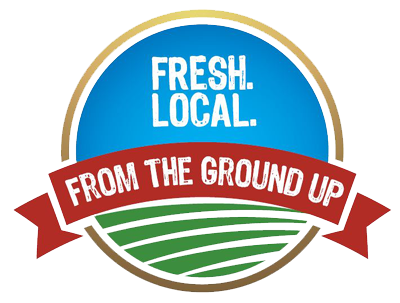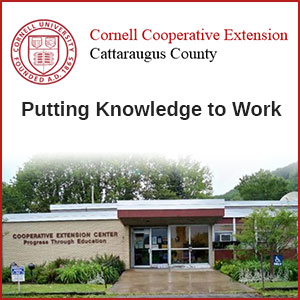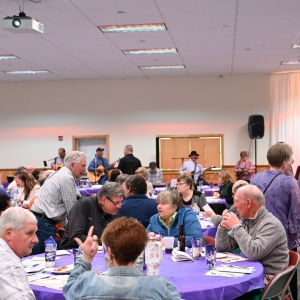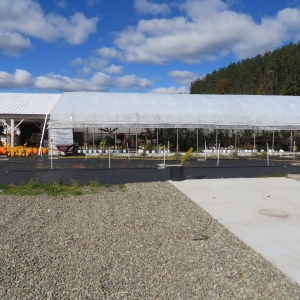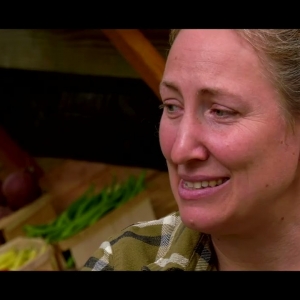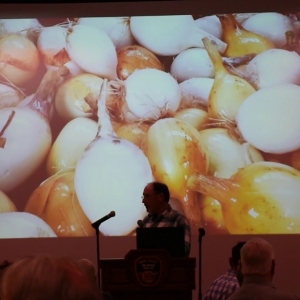Other Ag News: REAP Must Remain Functional and Accessible to Farmers
Farmers and rural businesses are still waiting to find out if they can access one of the United State Department of Agriculture’s (USDA) most popular programs, the Rural Energy for America Program (REAP). This USDA program, which provides federal grants and loan guarantees for farmers and rural small businesses to invest in energy efficiency and renewable energy systems, has endured a funding freeze, delays, and now a potentially fundamental shift in program functions.
On August 19, 2025, US Secretary of Agriculture Brooke Rollins issued a press release outlining a number of changes to the REAP program, as well as to the USDA Rural Development Business and Industry (B&I) Guaranteed Loan Program. Specific to REAP, effective immediately, the memo outlines restrictions to the loan guarantee program and deprioritization in the grant program for ground mounted solar systems larger than 50kW. The memo also includes language that has caused uncertainty about whether grants can be used to purchase solar technologies manufactured outside of the United States. The impacts of these shifting priorities could be substantial, and the USDA has yet to provide any detailed guidance on how they will be implemented.
This latest announcement comes on the heels of a previous stakeholder announcement from June 30, 2025, that delayed the opening of REAP’s first grant application window for Fiscal Year (FY) 2026. Fiscal Year 2026 applications were supposed to be open from July 1 through September 30 but instead were delayed and the new application cycle has not opened. According to USDA, the delay was attributed to the “overwhelming response and continued popularity of the program resulting in a backlog of applicants.” It was then expected that the FY26 application cycle would open on October 1, a timeline likely complicated by the current shutdown. To date, USDA has yet to issue detailed guidance for farmers, rural small businesses, and technical assistance providers concerning how the new priorities outlined by the Secretary for the REAP grant program will be implemented.
This new uncertainty surrounding the program is compounded in light of recent events, when farmers and rural small businesses participating in REAP endured a funding freeze that lasted several months in early 2025. The freeze was the result of an Executive Order issued on January 20, 2025 seeking to shift federal support away from renewable energy. In response, the USDA immediately froze all funding for the REAP program, including for those grants and loan guarantees that were already obligated. It was not until early April 2025 that the USDA finally began to release frozen REAP funding. This long delay led to frustrations and unanticipated expenses for farmers and rural businesses who expected the USDA to honor its commitments.
Program Uncertainty Leading to Mistrust and Delayed Farmer Support
The National Sustainable Agriculture Coalition has been a longtime advocate for the REAP grant program’s ability to support farmers and ranchers in implementing their own projects to help them save money by becoming more energy efficient. The ongoing uncertainty and disruption to these programs have undermined the trust between farmers, rural businesses, and the USDA and threaten the future of this and other programs. During the period of frozen funding, for example, one farmer waiting on their REAP grant indicated they would “think twice about turning to USDA for help any time soon.”
A grant writing firm that does energy audits and prepares REAP applications shared that the current instability of REAP has taken a toll. The sudden changes and unclear guidance has put more than 100 grant applications on hold for this firm, representing over $20,000,000 in projects that have been stalled. NSAC urges USDA to provide more concrete guidance regarding how the new REAP priorities will be implemented and the program timeline. Without thoughtful guidance, USDA risks continuing to undermine this popular program.
According to one REAP grant writing firm, “Many farmers are using decades old grain dryers this harvest because ordering new equipment was dependent upon potential grant funding that never came. Others must now restructure their finances to resubmit applications.”
REAP Is Broadly Popular
The REAP grant program is a well-liked, bipartisan program with a strong focus on smaller farmer-owned projects. Since its inception, REAP has funded more than 19,000 grants totaling more than $1.8 billion in direct support to farmers, ranchers, and rural small businesses to help them improve their energy efficiency and reduce operational costs. 46% of those REAP grants were awarded to agriculture, forestry, fishing, or hunting businesses.
Because of its ability to fit in unutilized spaces, decrease utility bills, and integrate with agricultural activities in agrivoltaic systems, solar is a popular choice for REAP grant applicants. According to the data from Rural Development, 72% of all REAP grant projects are solar. There have been approximately 3,378 REAP grants for solar projects with businesses classed as agriculture, forestry, fishing, or hunting.
Looking at the descriptions provided of past projects, it is clear that, for the most part, USDA has an interest in keeping the grant program functional and that the changes described in the August 19, 2025, memo may have minimal effects on the majority of REAP grants. Only about 152 projects of the 3,378 REAP grants that went to farms and agricultural businesses, maximum, would have been affected by the new limitations because they had ground mounted solar installations of more than 50kW.
Even among the small number of projects that would have been affected by the new rules, it is worthwhile to note that many were still farmer-owned and not on productive farmland. Although the solar projects may be ground mounted and over 50kW, they are not on land competing with agricultural production. Rather, they are in proximity to buildings or infrastructure, such as a Colorado potato farm’s 59kW array next to their potato warehouse and a Michigan farm’s 1.2MW system for their poultry and egg barns. Instead of a blanket deprioritization of ground-mounted projects over 50kW, USDA should consider the incredibly varied operations that apply for the program and support producers with options that work best for their circumstances, including for needs over 50kW.
Confusion Remains Over Implementation of these Changes
Without clarifying guidance, it remains possible that the REAP grant program could lose much of its functionality. In the press release, Secretary Rollins says USDA “will no longer fund taxpayer dollars for solar panels on productive farmland or allow solar panels manufactured by foreign adversaries to be used in USDA projects” and, in supportive quotes, Members of Congress refer to “foreign-made solar panels.” The Department of Energy estimates that 85% of the solar modules installed in the US are imported, the majority from China. If guidance is implemented immediately in the next grant application cycle that limits imported solar materials, there are significant concerns that REAP will be impacted. With China responsible for a majority of the global solar market, domestic sourcing requirements could dramatically increase project costs, potentially pricing out the small farmers that REAP is supposed to serve.
Right now, producers are facing some of the toughest economic conditions in decades, and they need USDA programs like REAP that help diversify revenue and reduce costs to remain functional, reliable, and available. In the long run, investing in domestic solar manufacturing would benefit farmers and the US energy sector alike, but until such capacity is in place, restrictions risk cutting off affordable, proven technologies that farmers rely on. The press release also justified these revisions as a means of preventing solar development from displacing productive farmland. However, REAP grant data indicate that only a very small share of projects involved ground-mounted systems larger than 50kW, and among those, most were not located on high-value cropland. Farmers, especially those running small and midsized operations, cannot afford to lose access to cost-saving technologies at a time of historic economic pressure. If USDA wants REAP to remain functional, revisions must be carefully tailored to support domestic innovation without undermining farmer access.
The post REAP Must Remain Functional and Accessible to Farmers appeared first on National Sustainable Agriculture Coalition.
Signup for the Ag Newsletter
Get the freshest farm news, events and updates from in and around Cattaraugus County, NY at least once a month! Go signup!
Other ways to stay connected:
Get Involved in Farming
Resources for Starting a Farm in Cattaraugus County
Profile of Cattaraugus County soils
Agriculture Career Exploration
Questions about farming? Find out Who to Call


